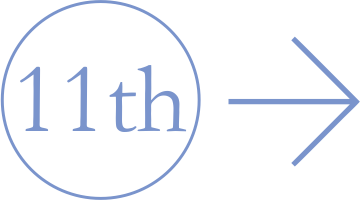10th Century Russia
In the 10th century, during the reigns of Olga, Svyatoslav the Brave and Vladimir the Great, the borders of Kievan Rus expanded and the Byzantine Empire, the Bulgarian Empire and the Khazar Khanate experienced first-hand the emerging state's growing strength. The century ended with the Baptism of Rus into the Orthodox faith - an event that influenced all aspects of Rus from politics and trade to art, music, literature and architecture. However the century also saw the first internecine war between Ryurikid princes - the first of many over the next centuries.
Oleg's Campaign against Constantinople

Oleg the Seer was a great military leader and from his new capital of Kiev he launched a raid on Constantinople in 907. He managed to get up to the city’s walls and attached his shield to the gates. The people of Constantinople were so afraid of Oleg’s army that they decided to offer him a trade treaty which was of great advantage to Kievan Rus. Oleg accepted and left the city.
Death of Oleg

According to legend once a wise man told Oleg that he would be killed by his own faithful horse. Oleg considered himself to be a seer and thought that he could trick death by sending his horse away to live the rest of its life out of trouble. In 912 when Oleg heard that his horse had eventually died, he laughed at how he had apparently succeeded in cheating death. Oleg asked to be taken to see the bones of his beloved horse. As he approached the horse's skeleton a venomous snake leapt out of the horse's skull and bit Oleg, killing him. The prophecy was thereby fulfilled.
Igor's Campaign against Constantinople

After the death of Oleg in 912, Ryurik's son Igor Ryurikovich finally became the Prince of Kiev. Back in 903 Igor was married to a beautiful noble woman from Pskov called Olga. Like Oleg before him, in 941 Igor set out on a campaign against the rich and powerful city of Constantinople, however the Byzantines were able to destroy Igor's fleet using their Greek Fire. Despite the defeat Igor did not give up and gathered more troops, including his allies the Pechenegs (a nomadic Turkic tribe), and launched a second campaign in 943. This time the Byzantines must have had greater fear of Igor as they entered into negotiations which resulted in a beneficial peace and trade treaty for Kievan Rus in 944.
Murder of Igor
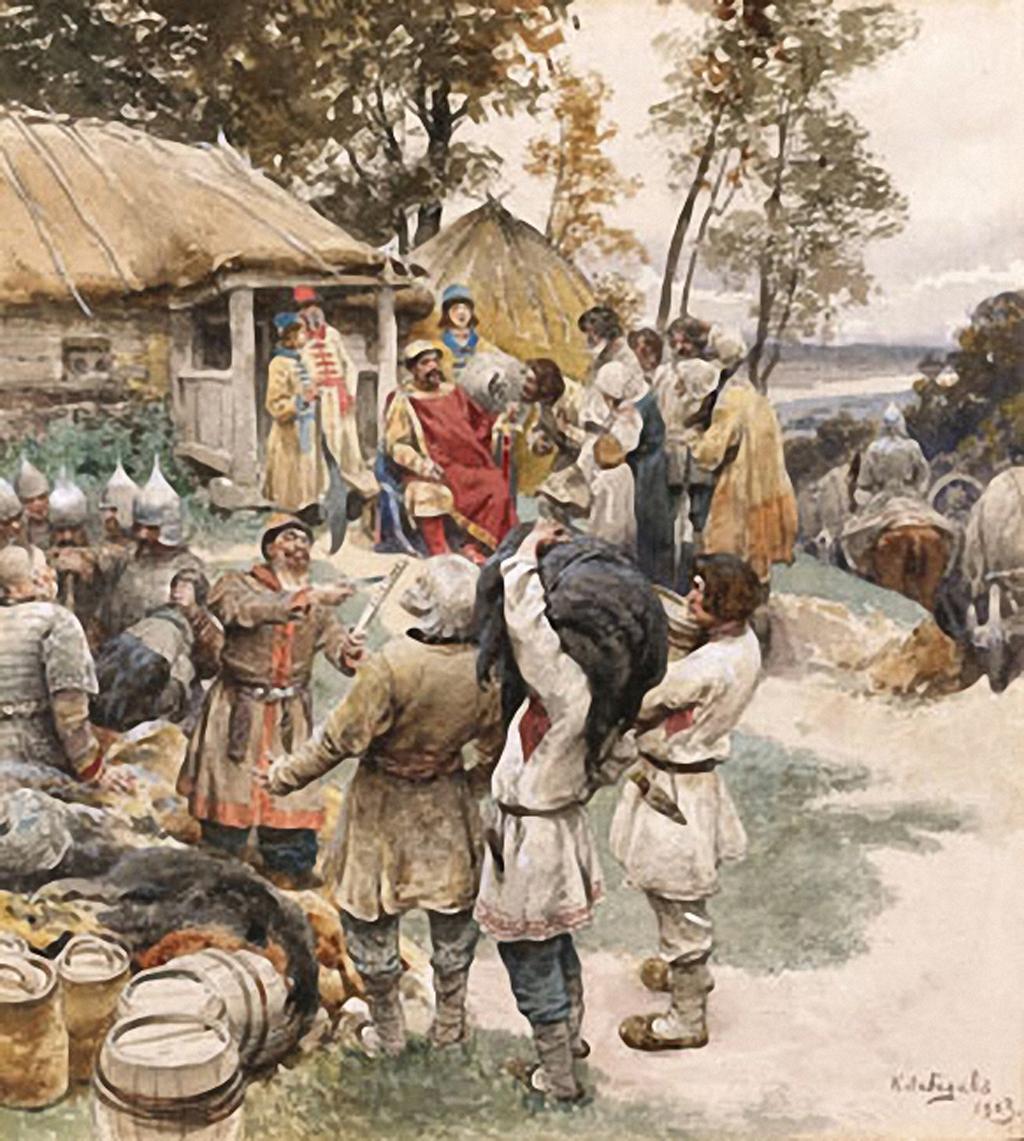
Igor ruled over several tribes and once a year he visited each tribe to collect a tribute from them. Any tribe that did not pay this tribute would be punished by Igor's army. One such tribe was called the Drevlians. In 945 Igor visited them and they gave him furs, food and other valuable items as a tribute. However Igor became greedy and returned once more within the same year demanding more gifts from the Drevlians. Instead of paying Igor, the Drevlians rebelled and killed him. One account says that two big birch trees were bent down and the Drevlians tied one of Igor’s legs to each tree and then let them go. The trees sprung up and Igor was ripped apart.
Olga’s Revenge
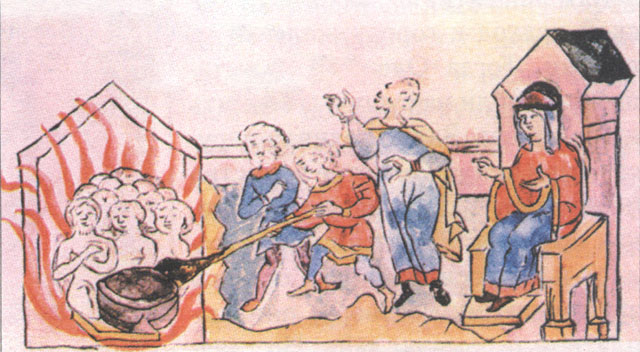
As Igor's and Olga's son Svyatoslav was just a boy when his father was killed in 945, it was decided that his widow Olga should rule Kievan Rus until Svyatoslav was old enough. The first task Olga decided to do was to get revenge on the Drevlians for murdering her husband. Ancient chronicles record the legends of the grisly revenge inflicted by Olga. Firstly a group of captured Drevlians were thrown into a pit and buried alive. Then Olga invited the best men of the Drevlians to come to her so she could select a new husband from them. When the men arrived she had a banya (a Russian sauna) prepared for them. When they were inside the banya the exits were blocked and they were burned alive. After this Olga and her troops went to the spot where Igor was murdered to hold a funeral mass for him. Whilst there she ordered her troops to slaughter any Drevlian they found. A final legend says how Olga tricked the Drevlians one last time. She told them that if each village gave her some homing pigeons, she would forgive them for the murder of her husband. When she received the pigeons, she tied to their feet some burning material. She released the pigeons and they flew home. When they landed on the buildings, whole villages caught fire and burned down.

Although Olga was cruel in her treatment of the Drevlians, she later became one of the first Christians in Rus. She visited Constantinople and was baptised there in either 945 or 957. At this time the rest of the population of Rus were still pagans believing in their own gods connected with nature. After her death Olga was made a saint by the Russian Orthodox Church. She also proved to be a very wise ruler and during her reign the first administrative reforms were performed in Rus.
Svyatoslav the Brave's Campaigns
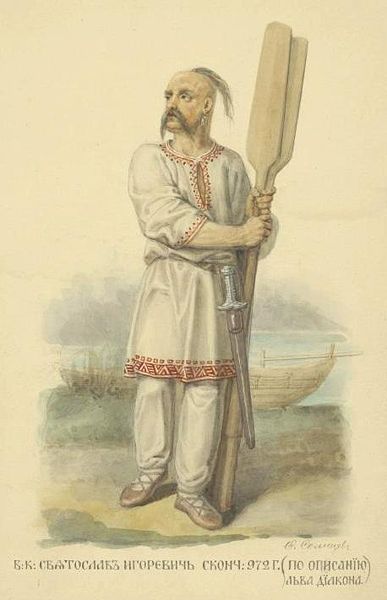
Even once Svyatoslav Igoreivich came of age, his mother Olga was often left in charge of Kiev as Svyatoslav was first and foremost a warlord and often left Kiev to go on campaign. He was described as having a shaved head with only a sidelock remaining and a long moustache. In addition, he is said to have worn a large gold earring. Svyatoslav enjoyed the respect of his men as even though he was their prince he did not live separately from them when at war, but slept on the ground alongside them all. When Svyatoslav set out on war he would send his enemy a note beforehand saying simply "I am coming for you!".
Svyatoslav wanted to control the whole of the River Volga so that he could use the river for trade. However at the time the area was controlled by the powerful Khazar Khanate who forced local tribes to pay tribute to them. Svyatoslav promised to protect these tribes if they paid tribute to him instead and supported his war against Khazaria. Those tribes that refused his offer were invaded and Svyatoslav conquered them and subjected them to Kievan rule anyway. Finally Svyatoslav invaded the Khazar Khanate destroying the major city of Sarkel in 965, sacking Kerch and then completely wiping the Khazar capital of Atil off the map.
Next Svaytoslav turned to the west. The Byzantines wanted to make use of Svyatoslav's military strength and asked him to attack their mutual neighbour: the Bulgarian Empire. Svyatoslav's campaign in 967 or 968 against Bulgaria proved to be so successful that it caused the Byzantines to become worried that one day Svyatoslav would become a threat to them. To stop this happening, the Byzantines decided to pay the Pechenegs to attack Kiev and thereby weaken Svyatoslav's position. The Pechenegs attacked in 968 and began besieging Kiev where Olga was with Svyatoslav's three young sons. According to legend Olga was able to send out a spy to tell a nearby Rus army to return to Kiev immediately. The army came at once and made as much noise as they could, this caused the Pechenegs to flee as they thought Svyatoslav with his whole army had returned. Once the city was saved, Olga wrote an angry letter to her son for failing to protect Kiev and his family. Svyatoslav returned to Kiev and defeated the Pechenegs who were still in Kievan lands.
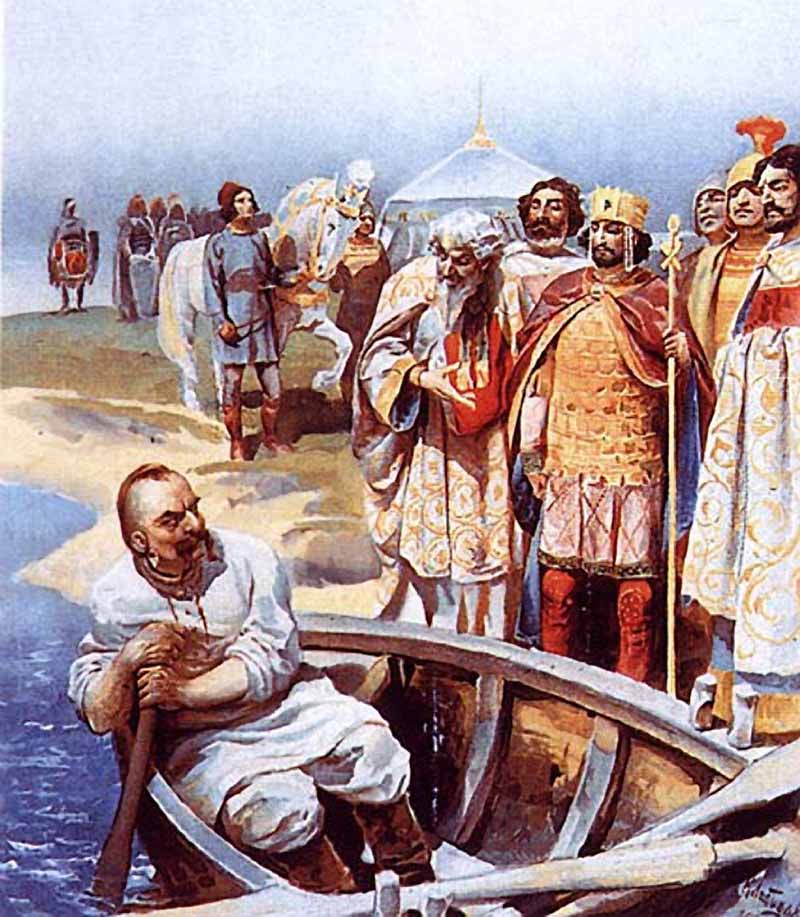
Once the trouble in Kiev was settled Svyatoslav returned to his campaign against Bulgaria. Byzantium demanded that Svyatoslav give over the land he had conquered in Bulgaria but he refused and settled in the newly conquered Pereyaslavets in 969. In the same year Svyatoslav’s mother Olga died. In 970 Svyatoslav launched an invasion of the Byzantine Empire itself. The war only ended when the Rus run out of supplies, Svyatoslav had no choice but to agree on a truce with Byzantium. However the Byzantines no longer trusted Svyatoslav and so employed the services of the Pechenegs once more, this time to kill him. In 972 Svyatoslav was killed during a Pecheneg ambush on his way back to Kiev. As he was such a feared warrior the khan of the Pechenegs ordered that his skull be made into a chalice.
War between Svyatoslav’s Sons
Once Svyatoslav settled in Pereyaslavets, he divided his Kievan lands into three parts. He named his older son Yaropolk - grand prince of Kiev, his second son Oleg - prince of the Drevlian lands and his third son Vladimir - prince of Novgorod. After Svyatoslav's death in 972 the brothers began to argue among themselves. Around 977 a war broke out between Yaroslav and Oleg after Yaropolk accused Oleg of killing the son of Yaropolk's advisor. Yaropolk marched on Oleg and killed him. Next he sent his troops to Novgorod. Vladimir heard news of how Yaropolk had killed Oleg and was now marching on Novgorod. Vladimir decided to flee and Yaropolk became the ruler of all Rus lands.
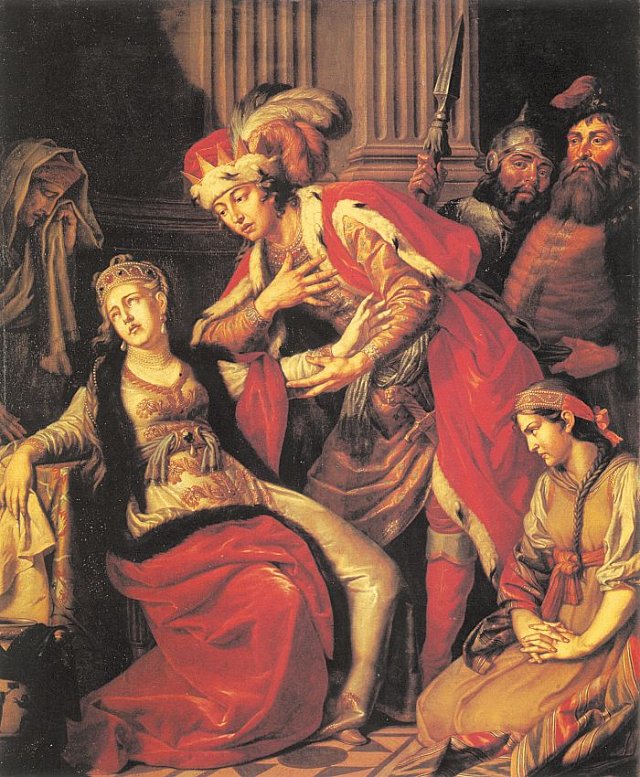
However Vladimir was not willing to give up and let his brother rule everything and in 978 he returned to Rus with a Varangian army. First Vladimir captured his old city of Novgorod, and then he captured the city of Polotsk (now in Belarus). Polotsk was ruled by Prince Rogvolod who had a beautiful daughter called Rogneda. Vladimir asked to marry Rogneda but she refused saying she had already agreed to marry Yaropolk. Vladimir was so angry that he killed Rogneda's family and took Rogneda by force.
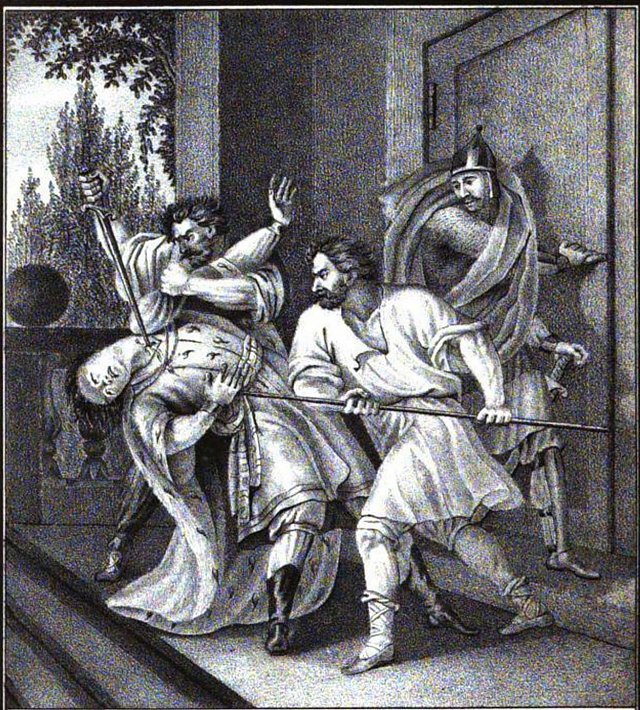
From Polotsk Vladimir set off for Kiev where Yaropolk was located. Vladimir started to besiege the city. Vladimir decided to use his cunning to defeat his brother and bribed one of Yaropolk's advisors. The advisor told Yaropolk to leave the city to negotiate with Vladimir. Yaropolk trusted his advisor and set off for Vladimir's camp. On the way he was ambushed by Vladimir's men and killed.
Baptism of Rus
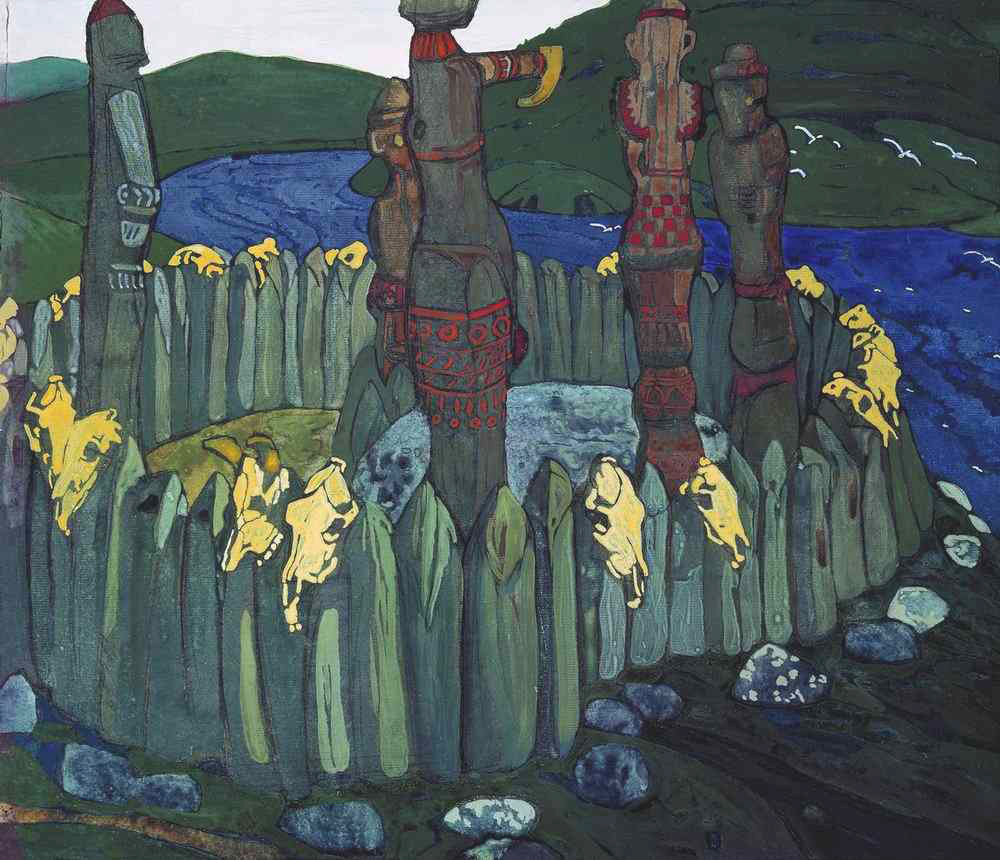
Once Vladimir had defeated his brother in 978, he set about securing his reign as Grand Prince of Kiev. He decided the best way to do this was to unite his people under one religion. At this time the people of Rus were Pagans and worshiped various gods related to nature. Each tribe had their own set of gods slightly different from the next tribe. Vladimir decided to change this and so on a hill he built tall idols of six major pagan gods called Perun, Khors, Dazhbog, Stribog, Semargl and Mokosha. He hoped that his people would all start worshiping these six gods. However later Vladimir decided to abandon Paganism altogether and to find a new religion for his people.
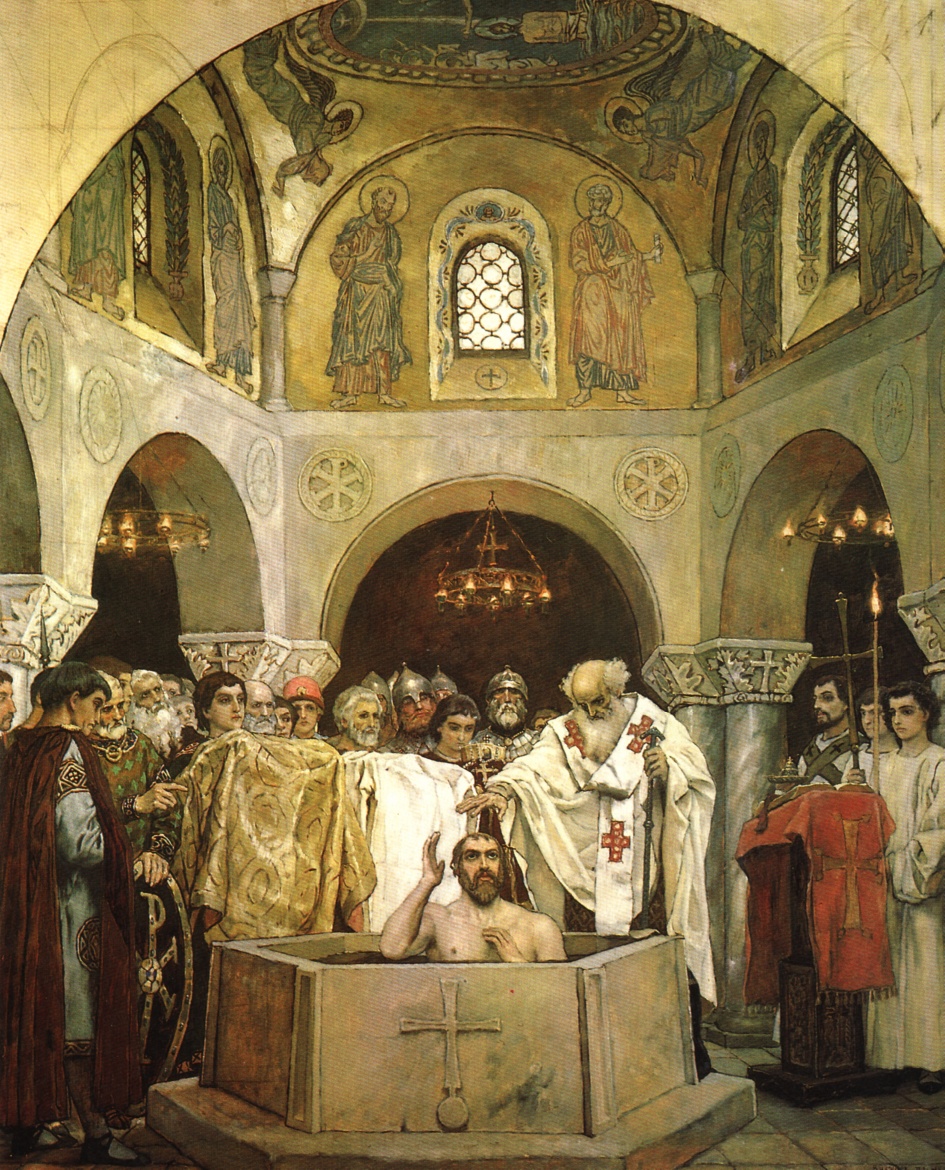
In order to find the appropriate religion for his people he sent out ambassadors to neighbouring states to find out about their religions: Islam, Judaism, Catholicism and Orthodoxy. According to legend Vladimir rejected Islam as it was forbidden to eat pork and drink alcohol - favourite activities of his subjects. He rejected Judaism as he believed the Jews’ loss of Jerusalem was a sign of weakness. Finally he rejected Catholicism as the ambassador upon his return from Germany said how the catholic churches there were not that impressive. However the ambassador who returned from Constantinople told Vladimir how the Orthodox cathedrals there are so beautiful he was convinced that he was no longer on earth but in heaven. Vladimir was persuaded that Orthodoxy, the religion of his grandmother, was the correct religion for Rus and he set about converting his subjects. He captured the Byzantine city of Korsun (now Khersones in Crimea) and demanded he be allowed to marry Anna, the sister of the Byzantine Emperor. This was permitted and in 988 Vladimir was baptised in Korsun as an orthodox Christian. When he returned to Kiev he had every citizen baptised in the River Dnieper and he destroyed the pagan idols.


